Last updated: March 9, 2020
Article
American Pika at Mount Rainier National Park: Keeping an eye on one of Mount Rainier's most climate sensitive species
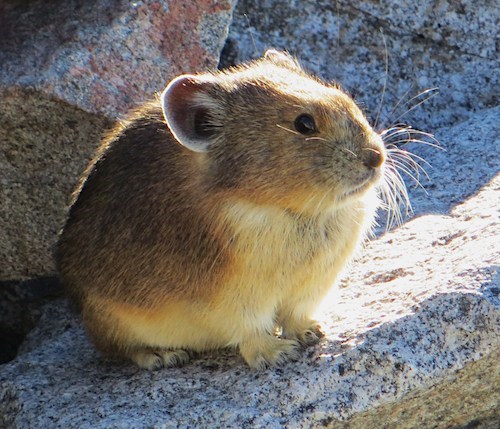
NPS Photo
Background
The American pika (Ochotona princeps) is a small herbivorous mammal, related to rabbits and hares, which resides in mountainous regions of western North America. Pikas primarily inhabit patches of fragmented rock and boulder fields known as talus. Pikas do not hibernate and have adapted to survive the cold alpine winters. They collect vegetation including ferns, grasses, herbaceous plants, bits of shrubs, and conifer twigs to create haypiles, which serve as their food source for the winter (Conner 1983; Dearing 1997). Pikas combat freezing winters with thick coats of insulating fur and a high metabolism (Smith and Weston 1990), but this means that pikas are prone to overheating. Just two hours exposure to temperatures above 28°C (82.4°F) can be fatal (MacArthur & Wang 1973). This means pikas are particularly vulnerable to summer heat stress (Beever et al. 2010). The temperature in talus habitat is fairly stable year-round, which allows pikas to keep cool in the summer and warm in the winter. (Smith and Weston 1990, Beever et al. 2010).
Pika populations are decreasing or becoming extirpated in some portions of their range in response to human-caused climate change (Beever et al. 2011, Stewart et al. 2017). An increase in temperatures may have made talus habitat increasingly hot and dry, forcing pikas to higher elevations to escape the heat (Beever et al. 2010). Because of the conical shape of mountains, the total amount of available land area decreases as elevation increases, and suitable talus habitat and vegetation becomes sparse or non-existent, which leaves limited options for pikas to move upslope (Beever et al. 2010).
American pikas populations are responding differently to climate change in different parts of their range (Ray et al. 2016, Rodhouse et al. 2018, Smith et. al. 2019). This variability between regions means that detailed monitoring from across the pika’s range will be necessary to understand how different populations are faring under a changing climate, and how best to manage for healthy pika populations moving forward (Smith et. al. 2019)
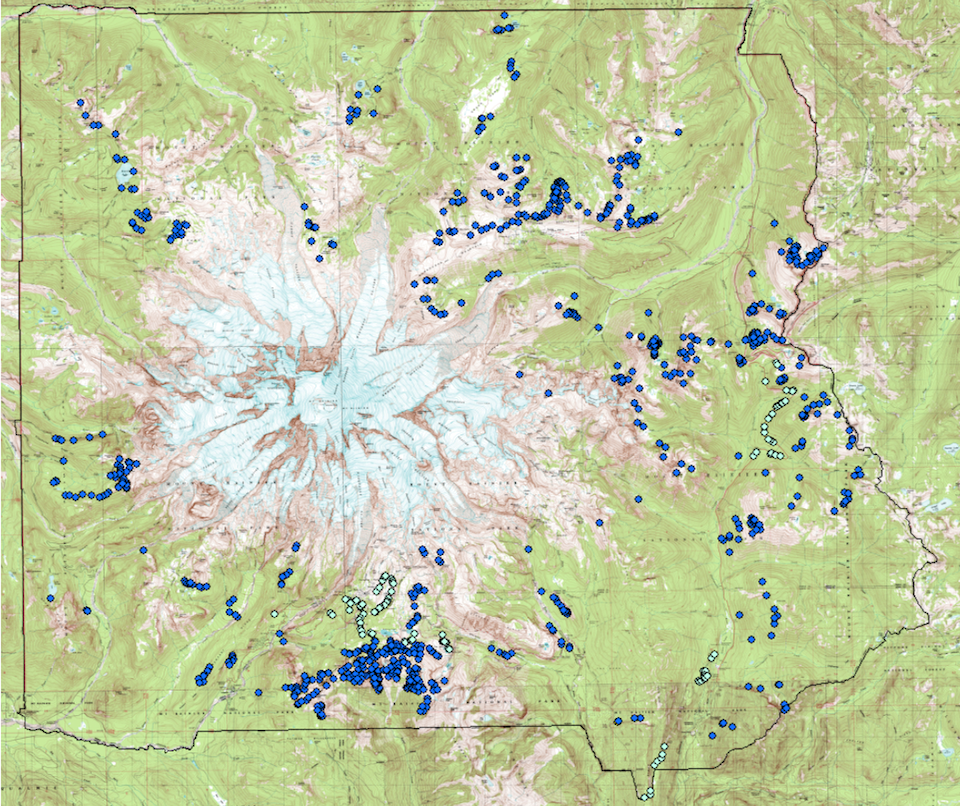
NPS Image
Pika at Mount Rainier
Mount Rainier National Park began monitoring pika populations in 2007. These surveys were initially established to monitor potential impacts of road maintenance and construction projects on nearby pikas. Since 2007, with additional effort from dedicated volunteers and seasonal park staff, 900 individual pika sites have been identified. Each site is a distinct patch of talus, which may contain one or more pika territories (Figure 1). The goal of pika monitoring in the park is to understand American pika distribution and habitat selection at Mount Rainier, monitor potential impacts from road construction and disturbance, and track changes in the status of American pikas over time.

NPS/A. Mangan Photo
Scientists survey for American pikas by searching talus patches; looking and listening for pikas, and searching for their haypiles and scat. Observers use these observations to determine how many distinct pika territories are present in a patch of talus, and the minimum total individuals occupying each site. Up to 35 individual pikas have been observed in a single talus patch on Mount Rainier! Habitat characteristics for each site are gathered including the slope and aspect of the site, the size of the talus patch, the average size of rocks within each patch, the quality and abundance of plant species that pikas collect for hay surrounding the site, and a description of the habitat surrounding the talus patch (forest, meadow, etc.).
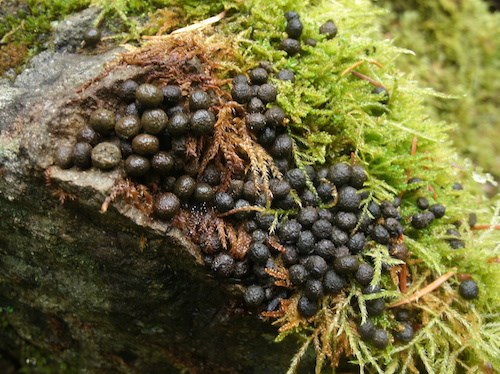
NPS/A. Mangan Photo
Fresh pika scat, one of the indicators that surveyors search for to determine if pika are occupying a site. They are the size and shape of peppercorns.
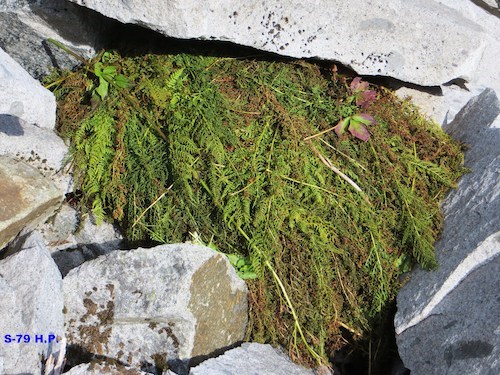
NPS/A. Mangan Photo
A large haypile made mosly of ferns. Haypiles vary greatly in size, from a few stems to several cubic feet of vegetation.
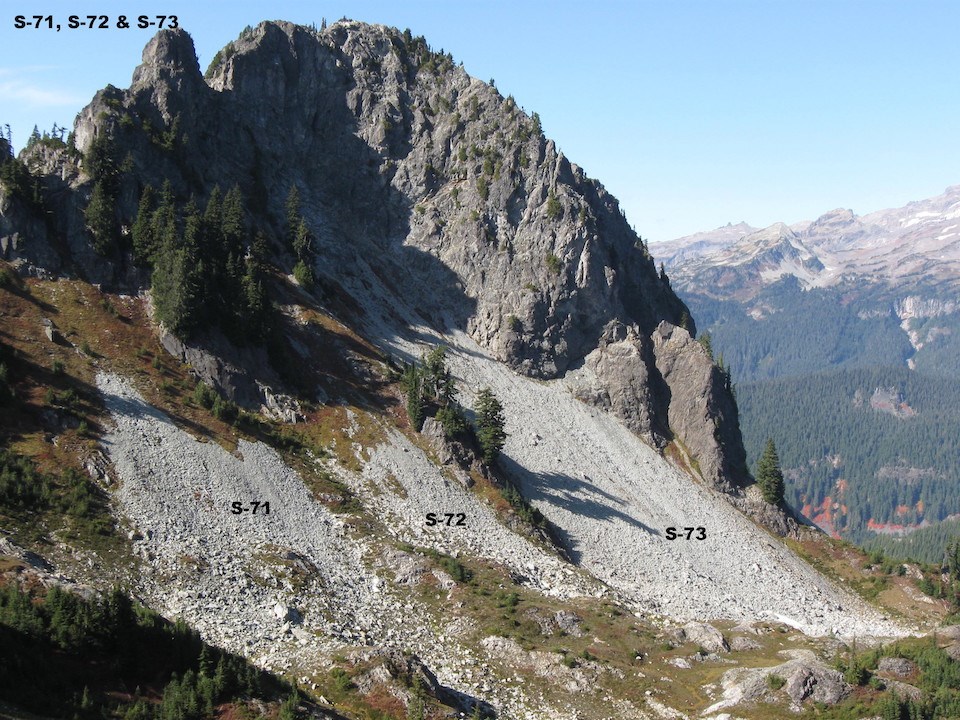
NPS/A. Mangan Photo
American pikas are widespread throughout the park, and appear to occupy talus of all patch sizes – from small sites with just a few boulders to huge areas of talus larger than a soccer field. The data have not yet been analyzed to determine if their numbers are stable, increasing or decreasing.
References
- Beever, E. A., Ray, C., Mote, P. W., & Wilkening, J. L. (2010). Testing alternative models of climate‐mediated extirpations. Ecological applications, 20(1), 164-178.
- Beever, E. A., Ray, C., Wilkening, J. L., Brussard, P. F., & Mote, P. W. (2011). Contemporary climate change alters the pace and drivers of extinction. Global Change Biology, 17(6), 2054-2070.
- Conner, D. A. (1983). Seasonal changes in activity patterns and the adaptive value of haying in pikas (Ochotona princeps). Canadian Journal of Zoology, 61(2), 411-416.
- Dearing, M. D. (1997). The function of haypiles of pikas (Ochotona princeps). Journal of Mammalogy, 78(4), 1156-1163. Dearing, M. D. (1997). The function of haypiles of pikas (Ochotona princeps). Journal of Mammalogy, 78(4), 1156-1163.
- Smith, A. T., & Weston, M. L. (1990). Ochotona princeps. Mammalian species, (352), 1-8.
- MacArthur, R. A., & Wang, L. C. (1974). Behavioral thermoregulation in the pika Ochotona princeps: a field study using radiotelemetry. Canadian Journal of Zoology, 52(3), 353-358.
- Ray, C., Beever, E. A., & Rodhouse, T. J. (2016). Distribution of a climate‐sensitive species at an interior range margin. Ecosphere, 7(6), e01379.
- Rodhouse, T. J., Jeffress, M. R., Sherrill, K. R., Mohren, S. R., Nordensten, N. J., Magnuson, M. L., ... & Epps, C. W. (2018). Geographical variation in the influence of habitat and climate on site occupancy turnover in American pika (Ochotona princeps). Diversity and Distributions, 24(11), 1506-1520.
- Smith, A. B., E. A. Beever, A. E. Kessler, A. N. Johnston, C. Ray, C.W. Epps … L. Yandow(2019). Alternatives to genetic affinity as a context for within-species response to climate. Nature Climate Change 10(9):787-794.
- Stewart, J. A., Wright, D. H., & Heckman, K. A. (2017). Apparent climate-mediated loss and fragmentation of core habitat of the American pika in the Northern Sierra Nevada, California, USA. PloS one, 12(8), e0181834.
- US Fish and Wildlife Service (2016). Endangered and Threatened Species: 90-day findings on petition to list American pika. Docket No. FWS-R6-ES-2016-0091.
